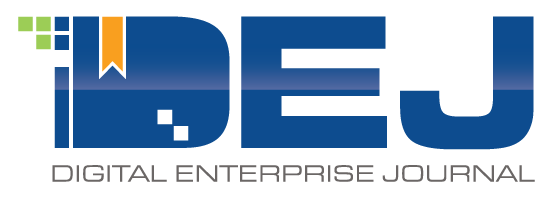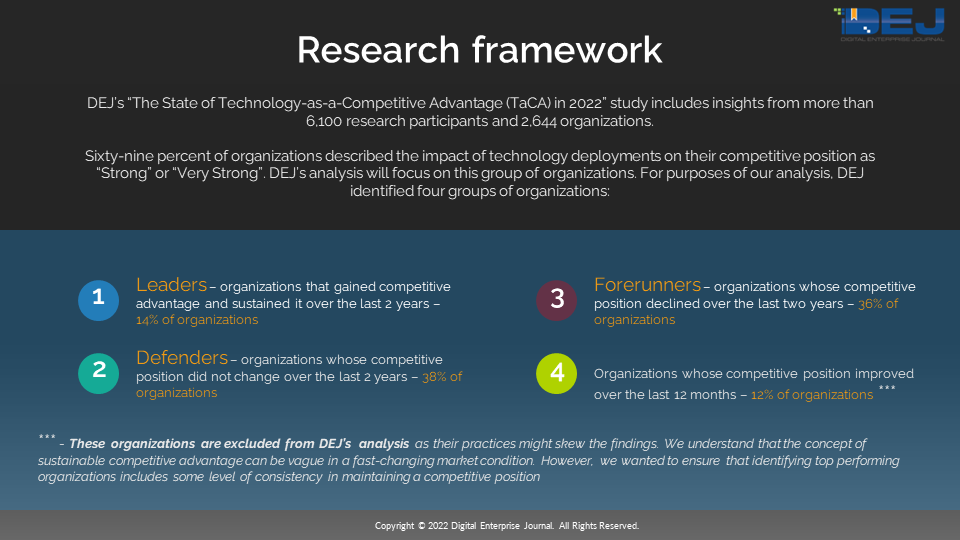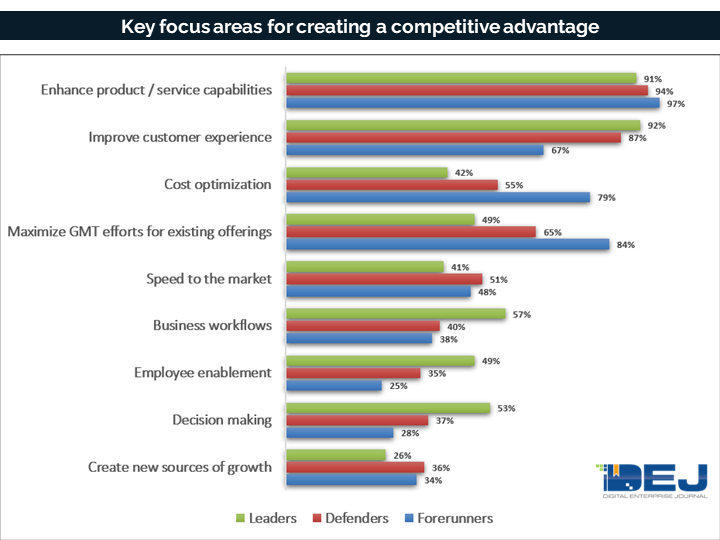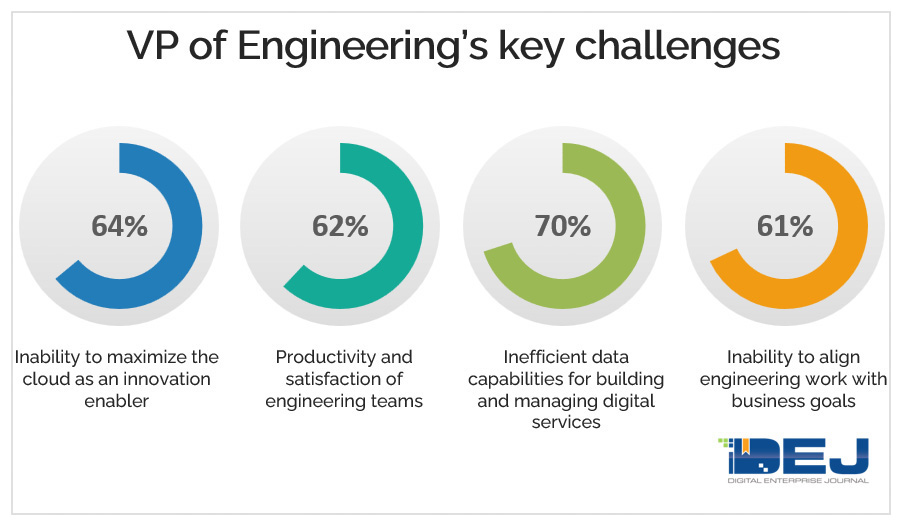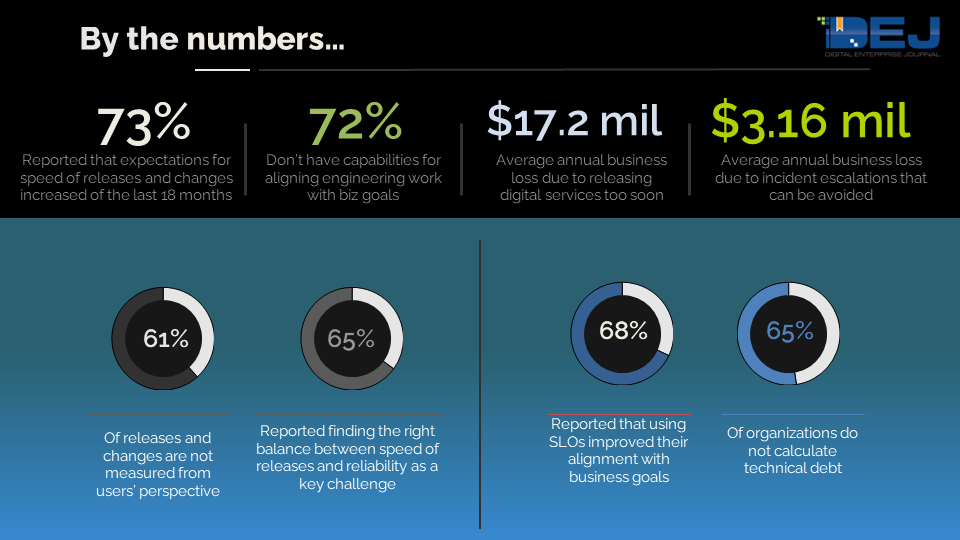Digital Enterprise Journal (DEJ) completed the research for a new study, “The State of Technology as a Competitive Advantage (TaCA) in 2022”. The goal of the study is to examine the impact of different types of enterprise technologies on organizations’ competitive position. Research findings based on more than 6,100 participants from 2,644 organizations showed that current practices for software development and delivery are not meeting expectations of business executives. The research reveals:
- 84% of business executives see development, delivery, and management of digital services as a potential source of competitive advantage.
- Only 41% of engineering leaders are satisfied in how their teams are performing
Over 800 participants in this research identified themselves as engineering leaders in their organizations (VP or Director of Engineering). DEJ created a subset of data based on their insights to recognize practices of top performers within this group and turn these findings into actionable recommendations for other engineering leaders. The findings of this analysis will be published in a separate study, “Practices of Leading Engineering Organizations for Creating a Competitive Advantage” and this DEJ’s Research Note summarizes key takeaways from this upcoming report.
Innovating to stay afloat
The 2022 State of TaCA study analyzes practices of three groups of organizations: Leaders, Defenders and Forerunners. The research shows that when it comes to focus areas for using technology to create a sustainable competitive advantage, both Leaders and Defenders are putting emphasis on product / service capabilities and customer experiences. Both groups of organizations are focusing on speed of releases, analytics and data driven product design, customer engagement and personalization of their services. As a result, 38% of these organizations are able to maintain their competitive position, while only 14% are able to establish a sustainable competitive advantage.
The research also identifies three areas that TaCA leaders are more likely to focus on: decision making, employee enablement and improving workflows. Interestingly, DEJ’s analysis of top performing engineering organizations also identifies these three areas as key difference makers.
Answering the question “What are we trying to do here?”
Engineering organization is not some isolated entity from the work that is being done by other groups in the organization. The research shows a 24% increase over the last two years in the number of tasks that engineering teams spend on doing that is work related to other functional areas (IT Operations, customer support, building internal apps for other departments, etc.). Also, 46% of organizations reported a lack of alignment between business and software cycles as a key challenge. Engineering work is directly contributing to key business outcomes, so engineering organizations must be closely aligned with overall business and product strategies.
DEJ’s research shows that TaCA Leaders are 71% more likely to task their engineering organization with direct contribution to key business goals, which has a strong impact on how their engineering operations are managed and measured. It should be noted that this is not to say that Leaders care less about delivering good code in a fast and efficient way, this shows that the term “good code” has a different meaning to them and it measured by the ability to create unique customer experiences and drive competitive advantage
Developers’ productivity and engineering efficiency – how important are they really?
The short answer to this question is: they are hugely important, but they are also a means to an end. The study shows that Leaders and Defenders are spending 86% less time on unplanned work, as compared to all others. DEJ’s research also shows that these two groups of organizations are more likely to be deploying capabilities such as:
- Advanced incident management practices, including processes for continuous learning from previous incidents
- Ability to reduce time spent on authenticating and onboarding
- Preventing unnecessary incident escalations
- Strong monitoring and troubleshooting capabilities
- Streamlining management of pull requests
- Advanced automation capabilities in many areas (testing, resource optimization, infrastructure provisioning, etc.)
- Lifecycle approach for Kubernetes management
- And several others…
“Planned time” vs. high value work
The study also shows that there is no significant difference between Leaders and Defenders regarding time spent on unplanned work. However, where a true difference between these two groups is made is what they consider under “planned” work. This is predominantly a result of their approaches in two key areas.
Alignment with key business outcomes. The study shows that TaCA Leaders are 61% more likely to manage SDLC in a business context and 2.4 times more likely to prioritize their engineering resources based on the impact on business goals. These organizations are realizing that establishing an engineering efficiency is just a foundation for achieving the key goal for software development – achieving sustainable competitive advantage.
Time spent on developing and maintaining the infrastructure. TaCA Leaders are 2.8x and 64% more likely to report that building and maintaining cloud native architecture and developing their observability capabilities is considered “high value work”, respectively. DEJ’s recent state of the market study found that organizations are losing on average, $13.74 million annually due a lack of talent for modernization and adopting a cloud native approach. Additionally, DEJ’s upcoming study, “The Total Cost of Not Acting Due to a Lack of True Observability”, shows that average annual loss due to a lack of observability capabilities in software build and design stages is $965,000 annually.
Also, DEJ’s recent study shows a 76% increase in the importance of Kubernetes management over the last two years. The research also reveals a 6.8x average improvement in time to market after deploying Kubernetes. Benefits of adopting a cloud native approach and deploying Kubernetes go way beyond speed of releases, as building these types of infrastructures opens a number of possibilities for engineering teams to build services on top of Kubernetes and further enhance their ability to create differentiating customer experiences and do so faster and more efficiently.
It all starts with visibility
DEJ’s research shows that 65% of organizations do not have complete visibility into how their engineers’ time is being spent. TaCA Leaders are 2.2 times less likely to be experiencing this issue and that is a core requirement for enabling an effective engineering organization. Additionally, Leaders are 74% more likely to have visibility into the cost of impact of decisions related to engineering work. Also, top performing organizations are 3.7 times more likely to have capabilities for benchmarking the performance of their engineering organizations.
Visibility into inefficiencies, alignment with business goals and the impact on the company’s competitive position allows organizations to improve their decision making processes and take data-driven actions to maximize the business impact of their engineering organizations.
The art of shipping faster
The chart above shows that there is no significant difference between the importance that TaCA Leaders, Defenders and Forerunners are giving to speed to market as a part of their technology strategies. However, 24% of organizations reported that their competitive position declined due to slow software releases.
The speed of software releases has a significant impact on organizations’ competitive position. However, the research shows that organizations’ performance, if measured by the length of release cycles and deployment frequency, does not translate to business advantage. TaCA Leaders are realizing that using DORA metrics helps them improve efficiency of their operations, but it doesn’t enable them to achieve their key goal – creating exceptional user experiences.
Data capabilities
The study found that capabilities for data management and analytics are one of the key difference makers between top performing organizations and all others, especially in the following areas:
- Decision making and prioritization
- Troubleshooting and code improvement
- Managing feedback loops
- Access to actionable data, leveraging APIs and getting data to developers faster
- Quality and reliability of data used for software development
- Scalability
- Database capabilities
People, tools, and processes
DEJ’s study shows a 2.5 times increase in the number of organizations reporting that it has become more difficult to find and retain talent over the last 3 years. This challenge is even more prevalent in managing engineering organizations. Seventy percent of organizations reported workflows and collaboration as key reasons for developers’ frustration, while the inability to measure productivity and collaboration is a key challenge for 61% of engineering leaders.
TaCA Leaders are 86% more likely to leverage platforms that facilitate collaboration, business alignment and visibility into inefficiencies. These organizations are also 3.3 times more likely to be using SLOs and 96% more likely to be calculating and managing technical debt, respectively.
Summary
Strategies for enabling engineering organizations that can drive sustainable competitive advantage should include two aspects. The first foundational aspect should focus on improving developers’ productivity and engineering efficiency, while the key aspect for becoming a TaCA Leader in managing an engineering organization should be a set of practices for enabling engineering teams to drive key business outcomes.
